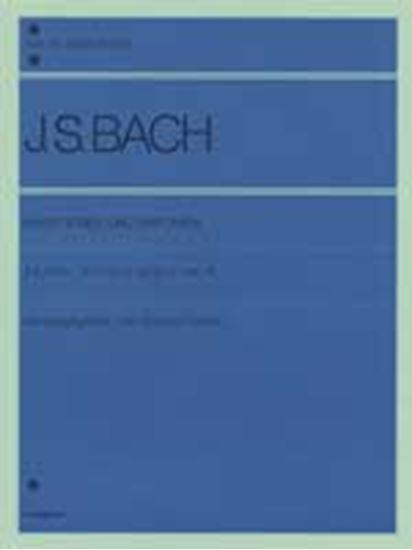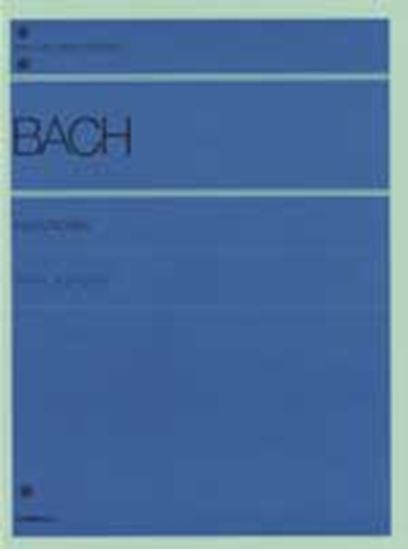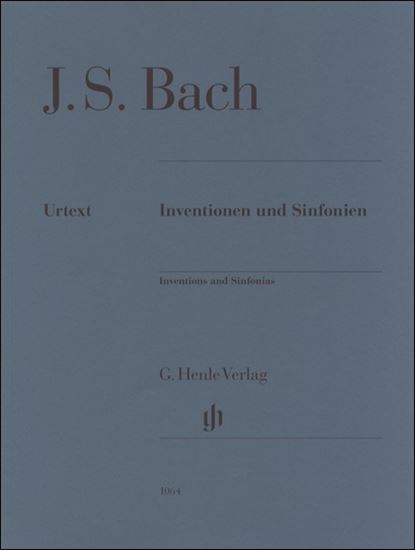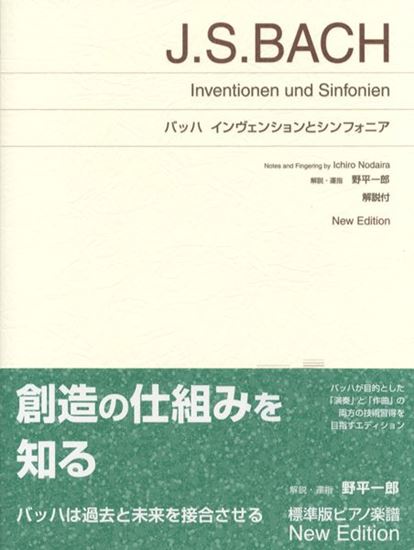Bach, Johann Sebastian : Sinfonia Nr.10 G-Dur BWV 796
Work Overview
Genre:pieces
Total Playing Time:1 min 10 sec
Copyright:Public Domain
Commentary (3)
Author : Takamatsu, Yusuke
Last Updated: September 18, 2020
[Open]
Author : Takamatsu, Yusuke
G major, 3/4 time.
A bright piece in G major. Like No. 1, the theme is constructed with sixteenth-note scales. The theme is presented by the upper voice in measures 1-2, after which the middle voice responds in measures 3-4. In measure 5, the middle voice seems to repeat the theme, but in fact, it deviates from the theme as an eighth-note arpeggio follows in measure 6, which becomes the motif characterizing the interlude.
What the middle voice plays in measure 11 is a variation of measure 5, which had functioned as an interlude. However, the following two measures are not eighth-note arpeggios but the latter half of the theme, revealing that measures 11-12 constitute a theme presentation (second exposition). Thus, the characteristic feature of this piece is its development with an ambiguous distinction between the theme and the interlude.
Author : Hayashikawa, Takashi
Last Updated: March 15, 2018
[Open]
Author : Hayashikawa, Takashi
The theme often appears with its entrance varied. In m. 11, the lower voice presents a portion of the theme starting half a beat early, on the downbeat of beat 1.
Score example provided by: Bärenreiter Verlag
Author : Ooi, Kazurou
Last Updated: March 12, 2018
[Open]
Author : Ooi, Kazurou
Sinfonia No. 10 in G Major
This Sinfonia conveys Bach's cheerful disposition. A characteristic feature of this Sinfonia is that the first note of the subject enters on an off-beat and is sustained for the longest duration. Given the basso continuo-like bass movement, the piece should be performed with vitality, which implies a relatively fast tempo.
Another characteristic of this Sinfonia is that the rhythm of the subject transforms depending on the context. In such cases, since it differs from the original subject, one might argue that it should not be considered the subject. Alternatively, it could clearly be judged as the subject. This is left to the performer's discretion.
Let us now examine the opening. In the soprano voice at measure 1, the phrase entering on the off-beat of beat 1 is the subject. This subject concludes on B on the downbeat of beat 1 in measure 3. We will define the subject as extending up to this point. The second subject appears in the alto voice, entering on the off-beat of measure 3. It begins on D and ends on F-sharp on beat 1 of measure 5.
Now, I would like to draw your attention to the soprano voice entering on beat 1 of measure 5. It bears a strong resemblance to the subject. The two differences are that it does not enter on an off-beat and its final note descends. A further issue arises: the bass voice entering on the off-beat of beat 1 in measure 7 clearly resembles the subject, but it lacks the final note. Previously, the final note would either descend or ascend by a second, but that note is absent here. Instead, a clear sequence begins.
Considering this, it might simplify matters to define the subject as beginning from the off-beat soprano in measure 1 and extending to the final A in measure 2. However, when contemplating the subject itself, ending on A feels rather unsettling; one strongly desires this note to resolve to B or G. The question is how to interpret this.
Moving on, the alto voice starting on E on beat 2 of measure 12 also closely resembles the subject, but its rhythm is different. The soprano voice starting on A on beat 2 of measure 13 is exactly the same. And perhaps from beat 2 of measure 15, the soprano voice beginning around this point is also remarkably similar to the subject. Furthermore, a subject-like voice emerges from B in the alto on beat 1 of measure 20. The bass parts in measures 22 and 24 also resemble the subject. Additionally, from G in the alto on beat 2 of measure 26, after a sequence spanning measures 27-30, it leads to the soprano on beat 2 of measure 31.
Given this, it appears that only the first two instances truly begin with a dotted eighth note on an off-beat and conclude by ascending a second. How to interpret these facts and incorporate them into performance is left to the performer. For instance, while the E in the alto emerging from beat 2 of measure 11 could be considered a rhythmic transformation of the subject, it would feel very unnatural to play the G-A-G-F# on beat 1 softly (p) and then suddenly introduce the designated thematic voice loudly from beat 2.
Instead, regarding the G-A-G-F# on beat 1, I feel it would flow more naturally to consider the initial G as the final note of the previous measure and perform the subsequent A as the start of the subject. What are your thoughts?
Finally, I will note the peak points and the quietest sections as I perceive them. The peak of this Sinfonia is in the soprano at measure 16, where the tension is highest. Next, beat 1 of measure 22 is the quietest section, and then the soprano at measure 27 presents a section with tension as high as, or even higher than, measure 16. For your reference.
PTNA & Partner Channel Videos(2items)
Sheet MusicView More
Scores List (42)

カワイ出版

(株)ヤマハミュージックエンタテインメントホールディングス

(株)全音楽譜出版社

(株)全音楽譜出版社

(株)ドレミ楽譜出版社

(株)音楽之友社

(株)全音楽譜出版社

(株)音楽之友社

(株)音楽之友社

(株)ドレミ楽譜出版社

(株)ドレミ楽譜出版社

(株)ドレミ楽譜出版社

(株)ドレミ楽譜出版社

ヘンレー

ヘンレー

カワイ出版

(株)渓水社

(株)音楽之友社

(株)全音楽譜出版社

(株)エー・ティ・エヌ

(株)全音楽譜出版社

カワイ出版

(株)音楽之友社

(株)音楽之友社

ヘンレー

ヘンレー

(株)学研プラス

















